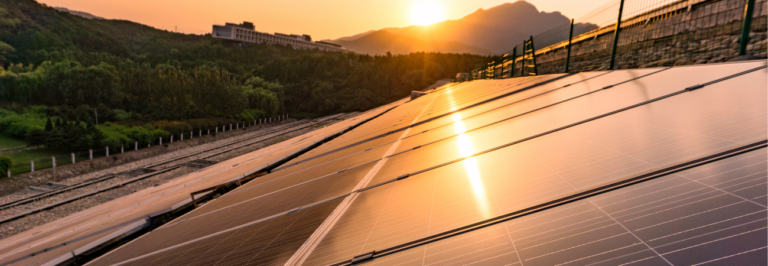Community solar is emerging as a powerful and accessible way for individuals and businesses to tap into the benefits of solar power without the complexities of installing panels on their own property. This collaborative approach is democratizing access to renewable energy, fostering local resilience, contributing to a greener future – all while offering cost savings to participants. Let’s delve into the details and explore the significant advantages of community solar.
What is Community Solar
At its core, community solar involves a shared solar energy system that is owned by or subscribed to by multiple participants. These solar projects can be located on a variety of sites – from vacant land to rooftops of commercial buildings to agricultural fields. But a business does not need to put solar panels on their own property to benefit.
Instead of each participant having their own individual solar panels, they subscribe to a portion of the energy generated by the shared system. The electricity produced is fed into the local utility grid, and participants receive credits on their electricity bills based on their share of the solar farm’s output. These credits reduce the amount the business owes to the utility.
Benefits of Community Solar for Businesses
- Carbon Reduction: Lower carbon emissions from the grid without the logistical challenges of on-site solar.
- Cost Savings: Reduce overall energy costs – and lock those savings in for years to come.
- Enhanced Public Image: Solar enhances a company’s reputation and appeal to environmentally conscious customers.
How Does Community Solar Work
While the specifics can vary depending on the project and location, here’s a general overview of how community solar typically functions:
Project Development: A developer (which could be a private company, a non-profit, or a utility) identifies a suitable site and secures financing for the solar array.
Subscription Model: Businesses can then subscribe to a portion of the project’s energy output.
Energy and Credit Generation: The solar panels generate electricity, which flows into the local utility grid. The utility then does the conversion to go from electricity produced to bill credits available.
Billing: Participants receive their allotted bill credits on their regular electricity delivery bills. The business buys these credits at a discount and thus offset the cost of the electricity they consume from the grid.
Key Considerations When Participating in Community Solar
While community solar offers numerous benefits, it’s important to consider the following:
- Contract Terms: Carefully review the terms of the subscription agreement, including the discount percentage, the length of the contract, cancellation policies, and potential fees.
- Savings Projections: Understand how the bill credits are calculated and the projected savings based on your energy consumption.
- Credit Availability: Consider when the credits will become available and when you can begin to benefit from participating.
- Project Developer Reputation: Research the track record and financial stability of the community solar project developer.
- Community Benefits: Inquire about any additional community benefits associated with the project, such as local job creation, educational initiatives, or ways that some subscription amount can be set aside for staff, customers, patients, students, tenants, or other residential buyers in your community.
The Future is Bright for Community Solar
Community solar is poised for significant growth as the demand for clean energy continues to rise and policies supporting its development expand. The availability and specifics of a community solar program will depend on local state and utility policies. But the benefits of community solar are many – empowering communities, reducing carbon emissions, lowering costs, and paving the way for a cleaner, more equitable energy landscape.
Talk to Environ
Environ has grown a network of developer partners across the country. We will help you identify which developers can meet your needs and which ones are not a good fit to work with. Environ prioritizes projects that have a high likelihood of completion, offer competitive savings rates, and are nearing start–up so you can start participating quickly. The best way to get started is to reach out to us and, if available in your area, we will connect you with a project that suits your facility.



